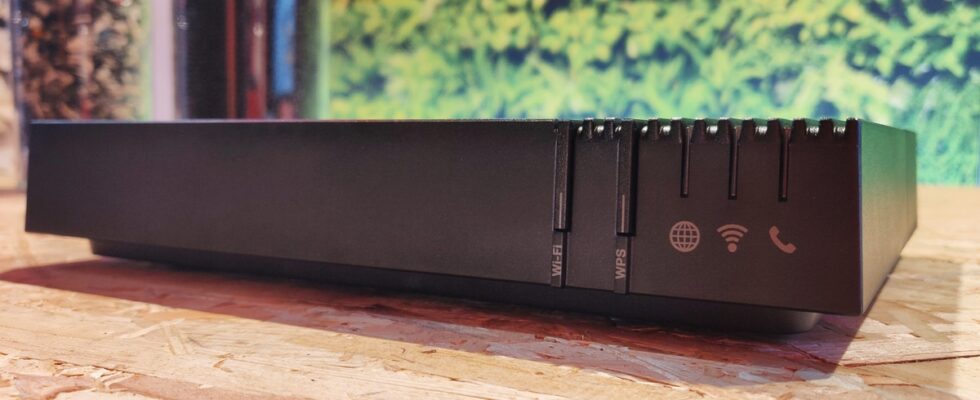Orange Livebox 5. © Les Numériques
Should you unplug your internet box at night to be eco-friendly? Until now, no public body had taken a close interest in this issue, this has now been corrected. In the 2024 edition of his survey For sustainable digitalthe Post and Telecommunications Regulatory Authority (Arcep) has finally taken an interest in these devices present in almost all our homes, specifically to measure their electricity consumption and impact on the environment.
Results, network boxes and TV boxes combined consumed approximately 3.3 terawatt-hours (TWh) in France in 2022. Consumption equivalent to 0.7% of national electricity consumption over the same period. This high figure proves that there is, according to Arcep, “room for progress […] to reduce the electricity consumption of this equipment through eco-design and the development of functions allowing the automatic deep standby of boxes or decoders”.
Half as much as a fridge
But behind this astronomical amount of energy lies a situation more nuanced and complex than we imagine. On average and at the individual level, a box that emits a wifi signal consumes 9.9 W. On continuously and with wifi activated, a box will therefore consume around 85 kWh per year. For comparison, a single-door refrigerator consumes around 174 kWh per year, a laptop 22 kWh and a washing machine (7 kg) “burns” 101 kWh, according to figures communicated by Ademe in 2022 .
95% of box consumption would be “invariable”, according to Arcep. This means it doesn’t change whether you connect 0, 5, 8, or 10 devices to it and use it to watch a 4K movie or not. Internet traffic and equipment connection only account for 0.4 W on average.
Details of the consumption of a box © Arcep
Not all boxes are equal on this point. Some have an invariable consumption around 3.6 W and others around 25 W. These variations depend on the eco-design efforts of operators, but also on-board functionalities. Boxes with hard disk consume the most (between 15.8 and 25 W), while xDSL models or those with an integrated fiber box consume the least.
Replacing your box with a less energy-consuming and more recent model is, however, not an ideal solution since the manufacturing of new equipment also weighs heavily on the carbon footprint. As Arcep specifies, “the gains linked to energy performance during the use phase of more recent equipment may be lower than those which would be associated with extending the total duration of use of less efficient equipment”. To really limit its footprint, the network policeman is outlining two avenues.
What solutions?
The first is to deactivate wifi when the box is not in use. Maintaining the wireless network continuously accounts for 1.9 W of consumption, or 20% of the total consumption. Again, consumption in this aspect varies a lot. “Recent generation wifi (wifi 6 marketed from 2019) consumes on average more than those of older generations”, notes Arcep. The boxes which have the most recent wifi protocols are often more modern, which on the other hand allows “to largely compensate for the additional electricity consumption linked to new generations of wifi”, details the report. On average, “deactivating wifi 8 hours per day throughout the year allows for annual energy savings of 7%”.
There remains therefore the solution of turning off the box, which mechanically has the effect of drastically reducing the associated consumption since “only the power supply still consumes electricity, but at a generally very low level, 0.1 W on average”. Note that power supplies that integrate CPL boxes consume up to 5.1 W, including when the box is turned off. Concretely, “Switching off the internet box allows for an annual energy saving of between 33 and 50%, depending on whether the internet box was turned off 8 or 12 hours per day throughout the year”.
There also remains the possibility of a reconditioned or recycled box. The sector is enjoying great success since 7.4 million devices of this type were in circulation at the end of 2022, or 19% of the total number of household devices. For efforts on a larger scale, it is to the side of operators that we will have to turn to demand more systemic consideration of ecodesign rules, less encouragement for renewal and an extension of the lifespan of products.
